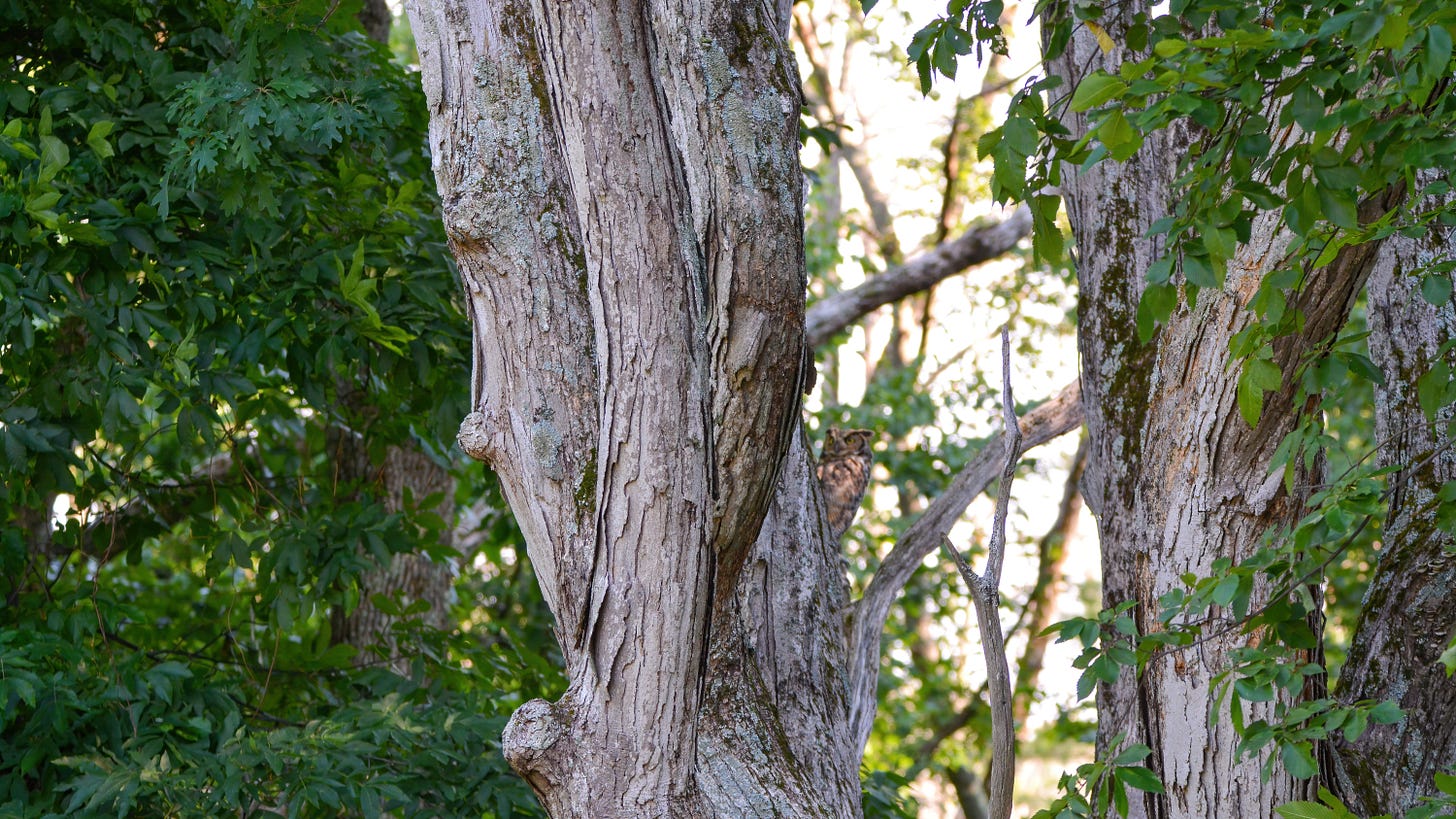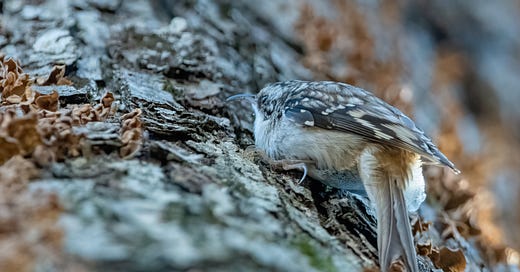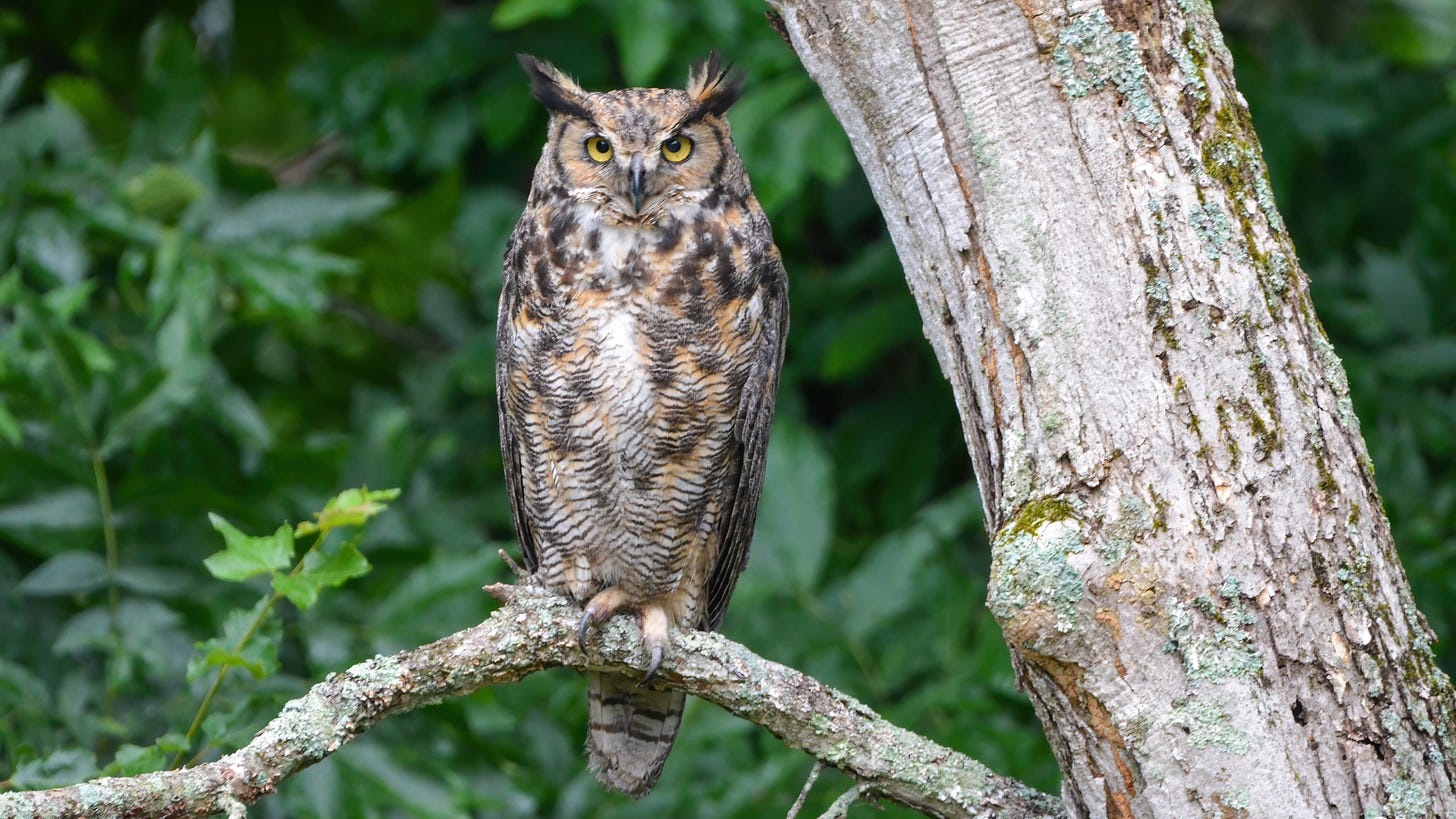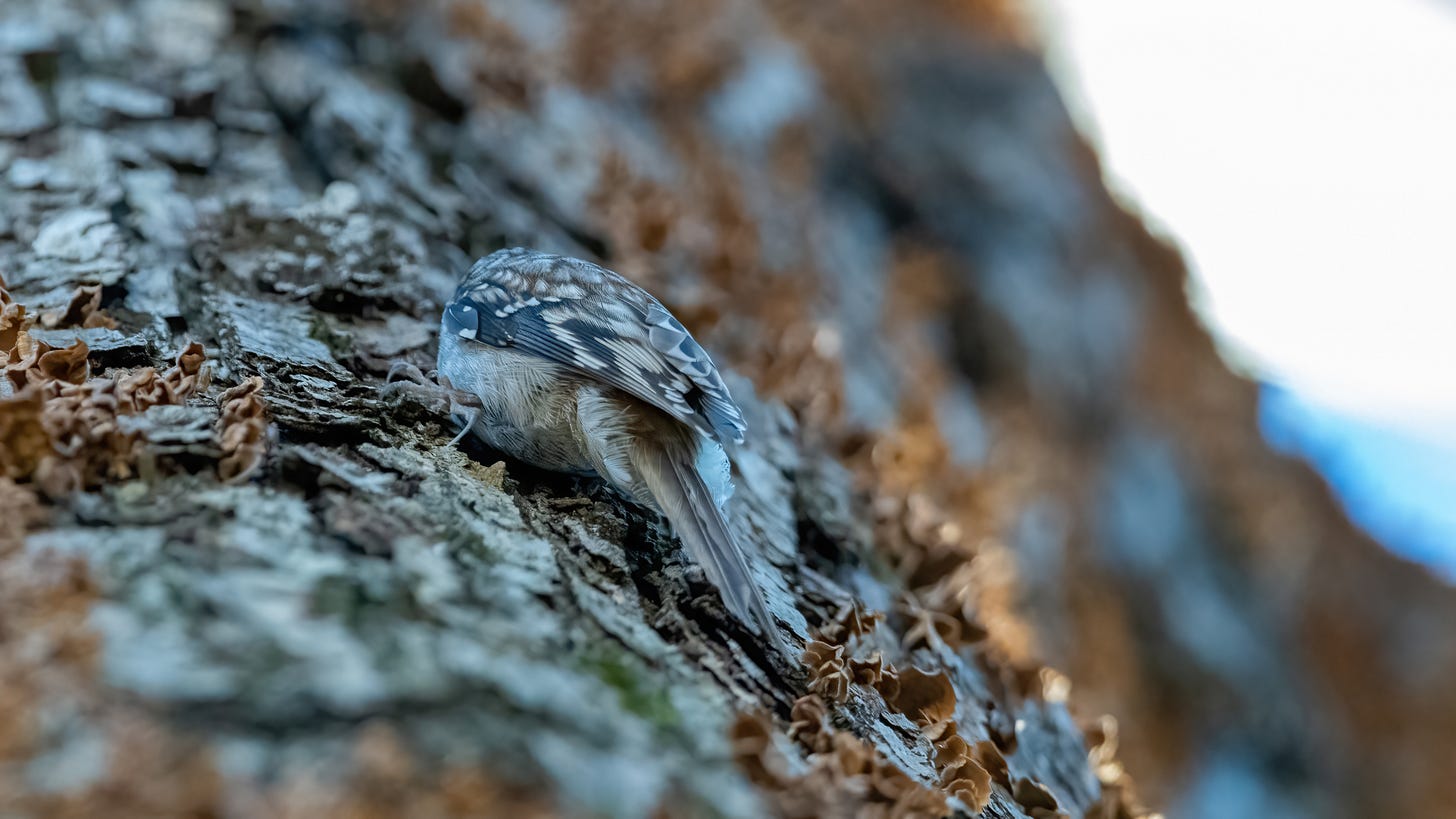It will never not excite me to see a Brown Creeper. They feel like a bird you’re not meant to see. They’re also notorious to photograph—for myriad reasons.
For those photos I do have, which are passable but not as good as I’d like, I’d been out taking pictures of coyote scat. I looked up from the coyote latrine to see a little avian silhouette on a thick tree trunk. Luckily, aside from my phone camera, I had my birding camera—had just taken pictures of a Northern Parula (maybe a forthcoming “Species Saturday”). I scampered over to investigate, craning my neck, navigating some boulders, sinking into swampland. The bird flew low before creeping up a huge old dead oak.

Reading about these birds on the Cornell Lab of Ornithology’s website, there was a great description of what I witnessed. “To move to a new tree, they fly weakly to its base and resume climbing up.”
That dead oak the Brown Creeper was on has always been fruitful from a birding perspective. It’s a favorite of Pileated Woodpeckers—riddled with their signature rectangular holes—Great Horned Owls, Red-bellied Woodpeckers, Northern Flickers, Cooper’s and Red-tailed Hawks. A trail camera of mine once picked up a Barred Owl right near it.
What does a Brown Creeper look like? Prominently, its bill is thin and curves downward, decurved. Their backs are brown and streaky. They camouflage well enough with trees to seem a “piece of bark come to life.” They blend in, move in a way that doesn’t scream for your attention. Their stomachs are white—but are usually pressed against a tree. When creeping around a tree trunk, these birds use their tails as support. They have longer claws to help with climbing, but their tails are also longer and end with spines, to support the bird.
They eat bugs and spiders. Their close proximity to bark when creeping helps them get at insect eggs and pupae too. I have to imagine the decurved bill also aids in this. From what I know, they’re fairly indiscriminate as far as what insects they eat.
The first time I saw one of these birds was through the window from the dinner table—creeping up and flitting about a basswood tree. Somehow I’d never heard of a Brown Creeper. They’re a bird I’m happy exists. A tantalizing enigma.
Merlin describes the Brown Creeper as a “tiny, cryptic, woodland songbird.” Cryptic is a nearly perfect word for these birds. Some synonyms include: enigmatic, vague, ambiguous, obscure, dark.
Yes. All of the above. The one thing about this bird that’s clear is its song. It’s a songbird, so that makes sense. If it’s singing, it’s a male. The way we understand a Barred Owl’s as who cooks for you, a chickadee’s as chickadee-dee-dee, a Brown Creeper’s song has been described as trees, beautiful trees. They’re a woodland songbird, trees are the Brown Creeper’s wheelhouse, which makes this easier to remember. Trees, beautiful trees.
You could say a Brown Creeper doesn’t look like a songbird—it’s not so comely as an Indigo Bunting. Still, once you know their song, you’ll hear it when you’re out in the woods. That doesn’t guarantee you’ll see them. As I said at the outset: They feel like a bird you’re not meant to see.
Recently, I went on a walk just to get outside, get some air. “Woodlands” is in the name of the conservation property. So, in hindsight, I shouldn’t have been surprised we saw a “tiny, cryptic, woodland songbird.” Minutes into our walk, it was right there. A Brown Creeper. The bird sang its song before we saw it—trees, beautiful trees—so I’ll guess it was a male.
Seeing a Brown Creeper always feels like a treat, as if the bird has for some reason let its guard down—letting you notice it. It also feels like a bird you would only notice if you know what to notice. There’s no way to say this without sounding snooty, but you could consider the Brown Creeper a birder’s bird. The things that make it exciting aren’t as readily apparent—it’s an enigma after all.
The fact that I, after years of birding, had never heard of one, buttresses this point. I spent too much time fretting about Ospreys, Prothonotary Warblers, or Wood Ducks—the flashy, big-ticket birds. That came at the cost of knowing that on any old tree trunk I might see the rare or uncommon—rare where I’m writing this—Brown Creeper. Small, brown, maybe unexciting to those who don’t know better. But once you “know better”—again, there’s no way to say that and not sound snooty—you get to be excited by what most people would pay no mind to.









Great writing James- You'll make me an experienced birder at some point.. Thanks- good stuff